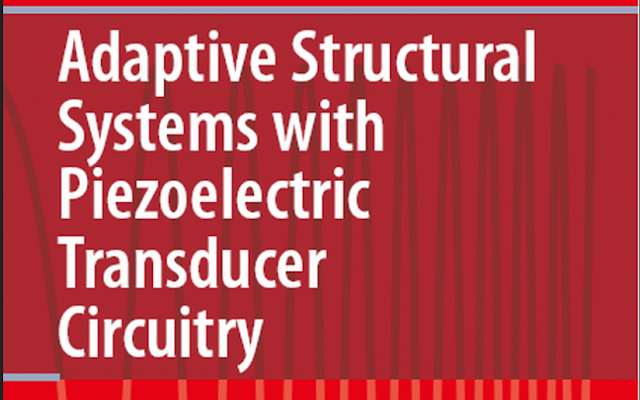Preface
The objective of this book is to present a general description of an emerg-ing technology, the piezoelectric transducer circuitry, for adaptive struc-ture development. The book provides basic understanding of the subject and discusses some of the research ideas investigated in recent years for structural control and identification enhancement. It is intended for re-searchers and engineers that are interested in adaptive structural systems.
As this emerging technology has been explored for a wide variety of appli-cations, individual technical papers on this topic are scattered in journals and conference proceedings with different foci. This research monograph is an outgrowth and organized compilation of the selected papers published by the authors during the recent years; it aims to providing a coherent plat- form for a systematic illustration of the subject, both quantitatively and qualitatively.
It encompasses multidisciplinary research in the areas of dy-namics, control, materials, and electronics, and consists of comprehensive descriptions of algorithm development, theoretical analysis, hardware im- plementation, and experimental investigation.
An introduction of the concept and related technical background is pre-sented in Chapter 1. In a piezoelectric transducer circuitry configuration, the transducer serves as the interface between the mechanical and electrical regimes, and the electronic elements in the circuitry allow one to favorably
alter the dynamics of the integrated system for control and identification enhancement. Essentially, these elements offer additional design freedom and lead to energy relocation within the electro-mechanically integrated system.
Through a series of studies, this book discusses the piezoelectric transducer circuitry’s local actuation /damping capability as well as its global control and identification features. At the local level, Chapters 2 and 3 demonstrate that properly designed active-passive hybrid circuitry can amplify the actuation authority and simultaneously increase the pas- sive damping. This approach will thus outperform a purely active method and at the same time require less control effort for vibration control.
- Advances in Engineering Structures, Mechanics and Construction
- Thermo Hydrodynamic Design of Fluidized Bed Combustors
- Thermal Stresses – Advanced Theory and Applications
- The Aerodynamics of Heavy Vehicles II Trucks, Buses, and Trains
- Biomass Conversion: The Interface of Biotechnology, Chemistry and Materials Science
Based on the basic active-passive piezoelectric circuitry architecture, adaptive ac- tion is then developed for variable frequency disturbance rejection (Chap-ter 4). Combined with nonlinear robust control method, the piezoelectric transducer circuitry can facilitate the cancellation of material hysteresis, which will lead to high precision actuation, as described in Chapter 5. At the global level, with an eigenstructure assignment methodology, the pie- zoelectric transducer circuitry can confine the system energy (to circuitry elements or unimportant region of the structure) to realize vibration control and isolation (Chapter 6).
On the other hand, a network with intercon- nected electronic elements between individual piezoelectric transducer cir- cuits can be developed to propagate the otherwise localized vibratory en- ergy in a mistuned periodic structure. Concurrently, such a circuitry network can be synthesized to become a global vibration absorber and en- sure multi-spatial-harmonics vibration suppression. Such a system is dis- cussed in Chapter 7.
Piezoelectric transducer circuitry has also shown promising features in vibration-based structural damage identification en- hancement. It is presented in Chapter 8 that by integrating a tunable pie zoelectric circuitry to the host structure to be monitored, more resonant frequencies can be induced within the sensitive frequency range, and mul- tiple families of frequency response functions can be generated. This will provide much more information of the dynamics of the damaged structure, and leads to improved damage detection and identification results.
Download Ebook: Adaptive Structural Systems with Piezoelectric Transducer Circuitry.
Book Preview!
Adaptive Structural Systems with Piezoelectric Transducer Circuitry
